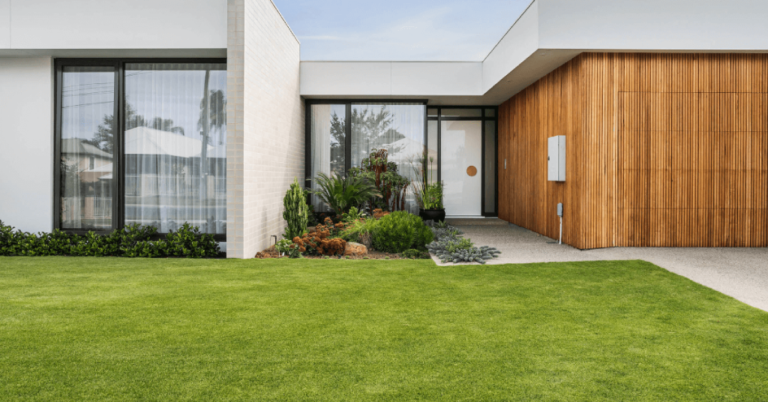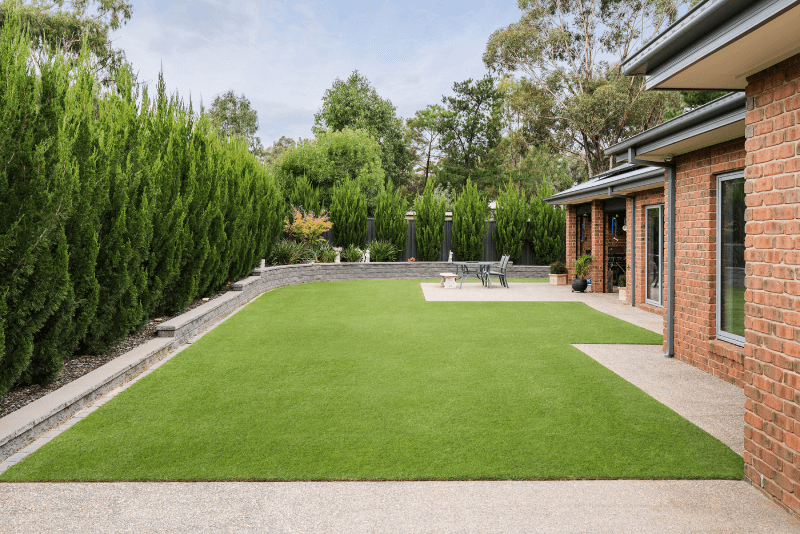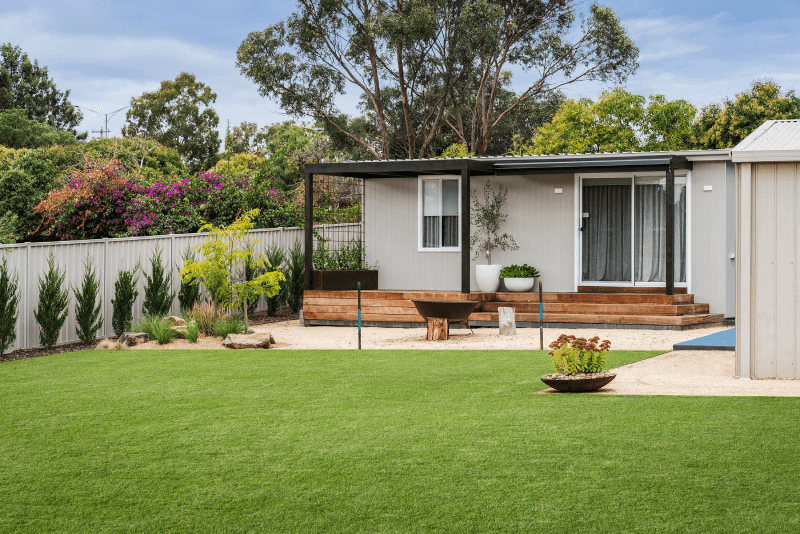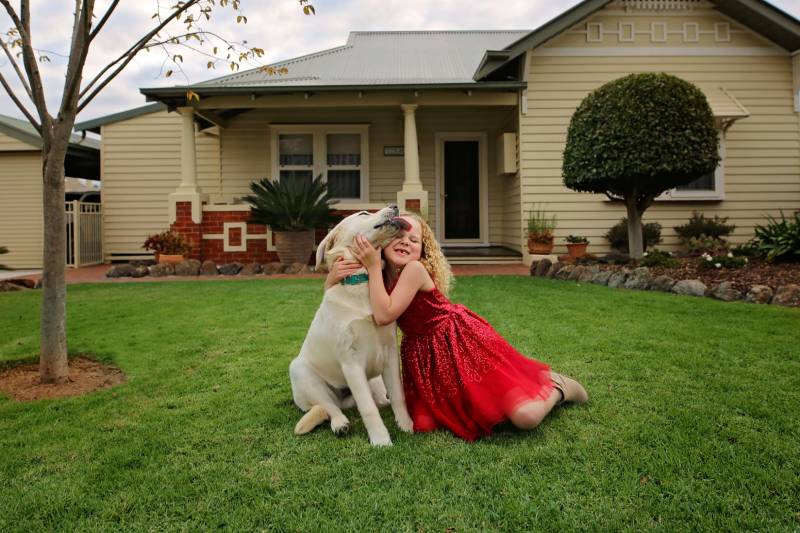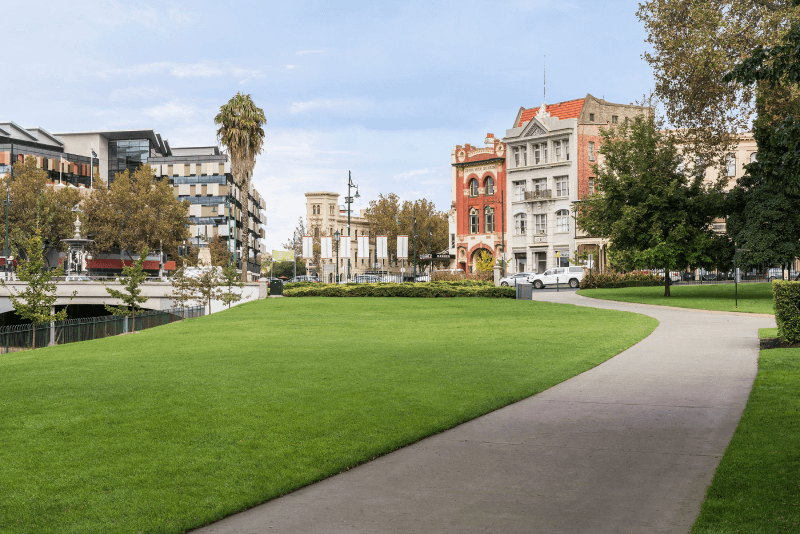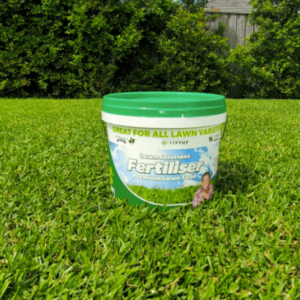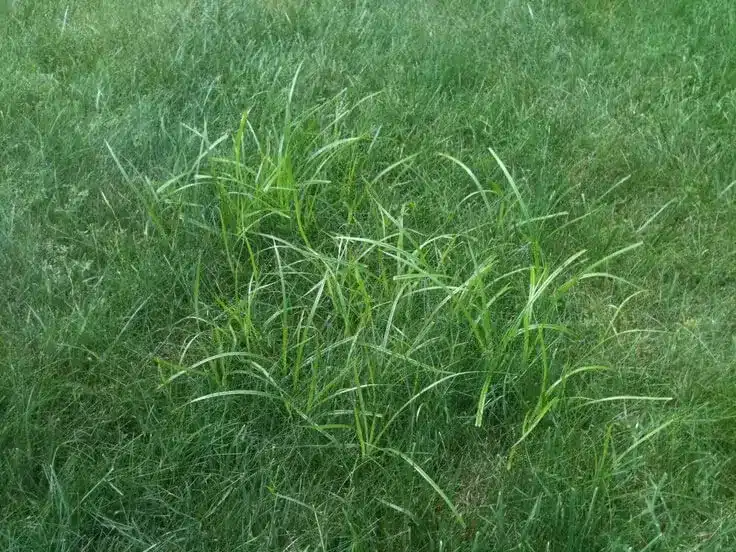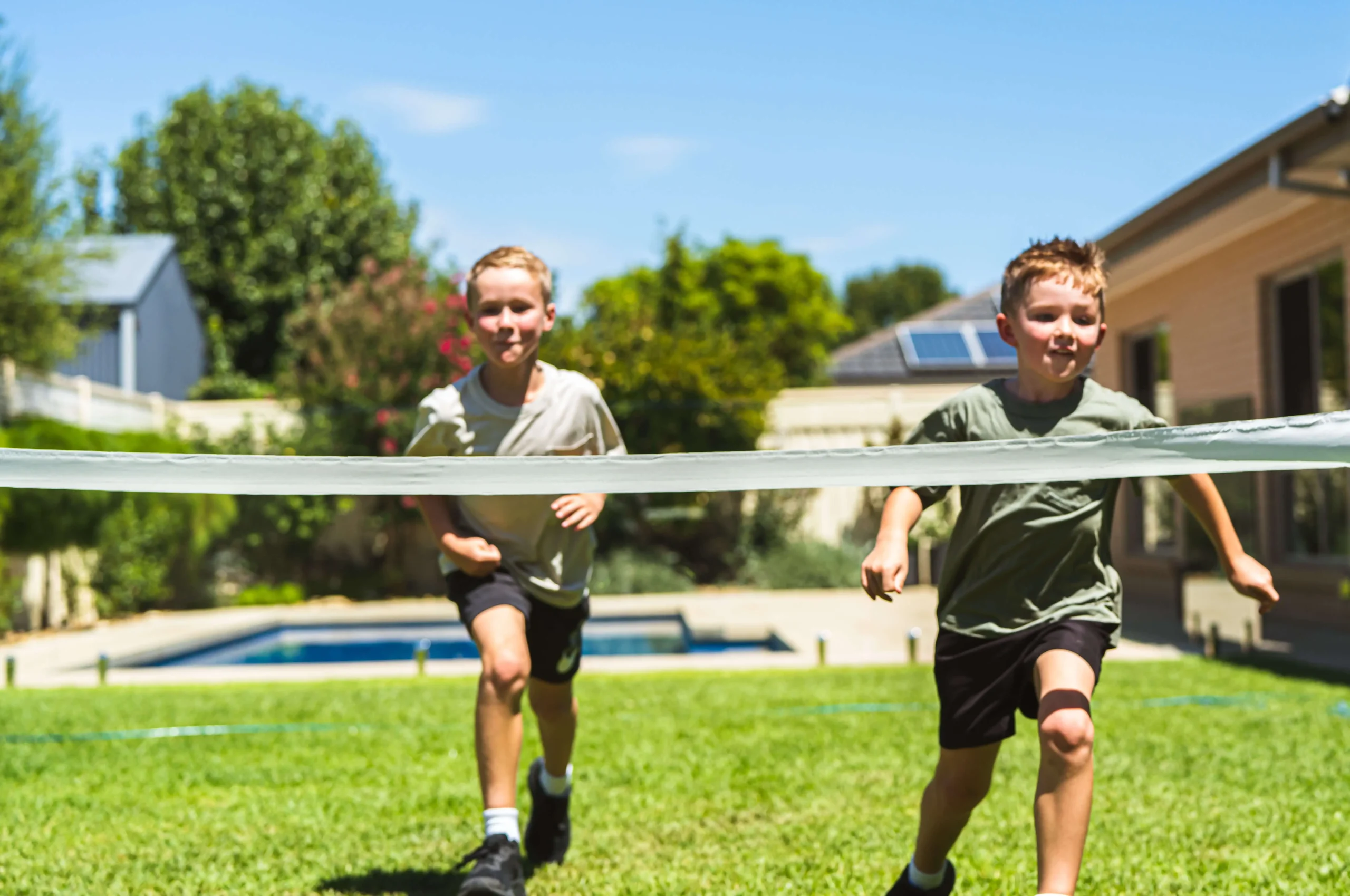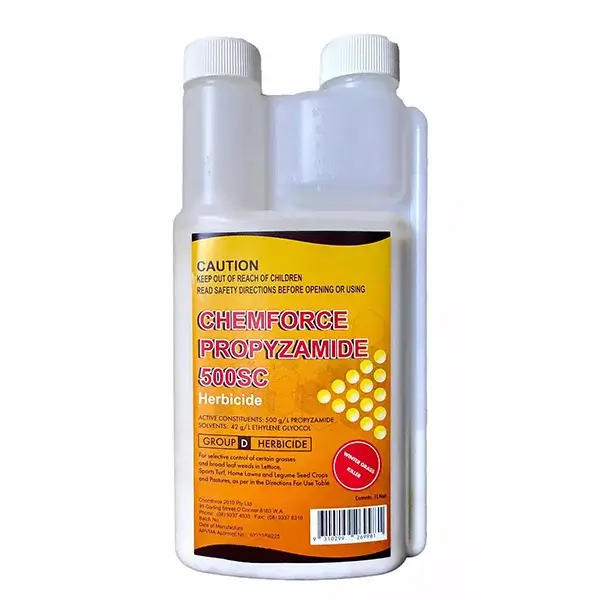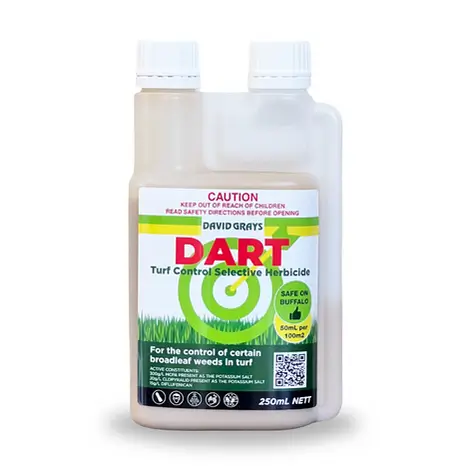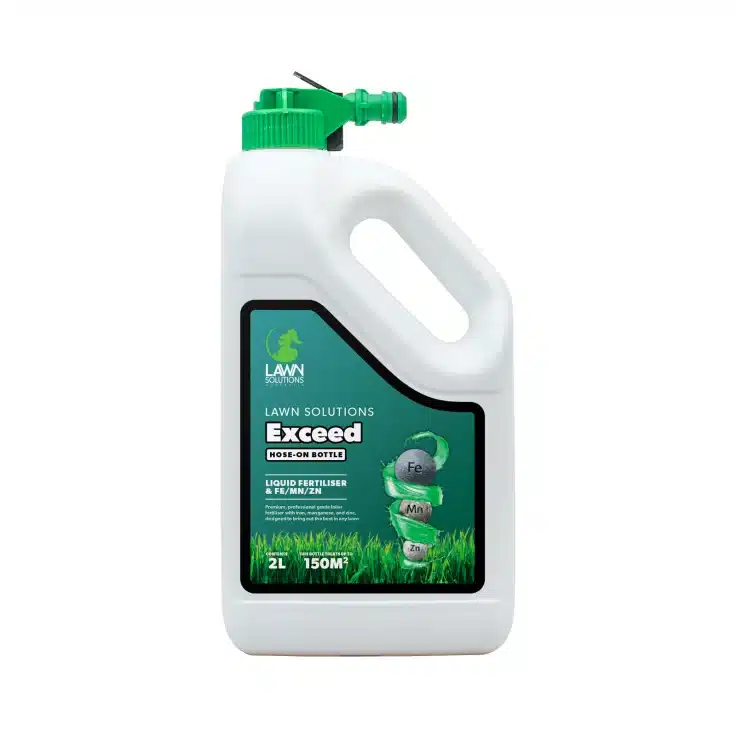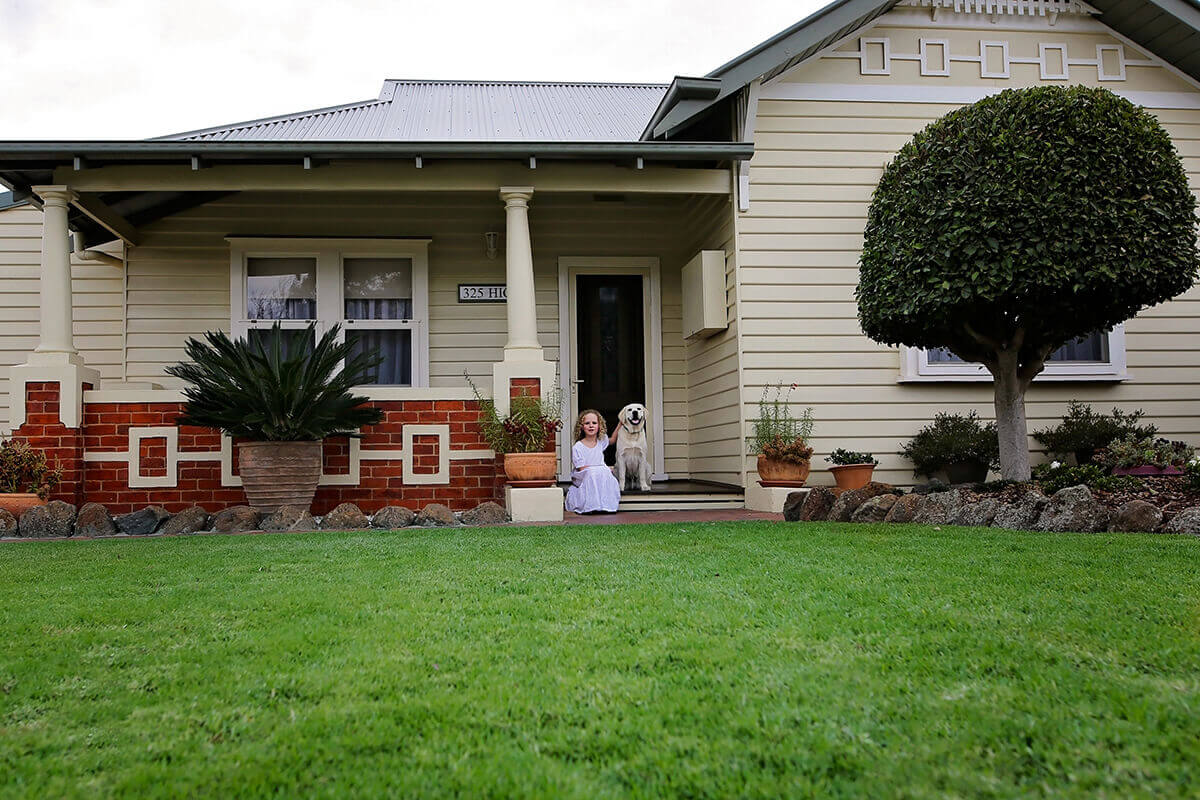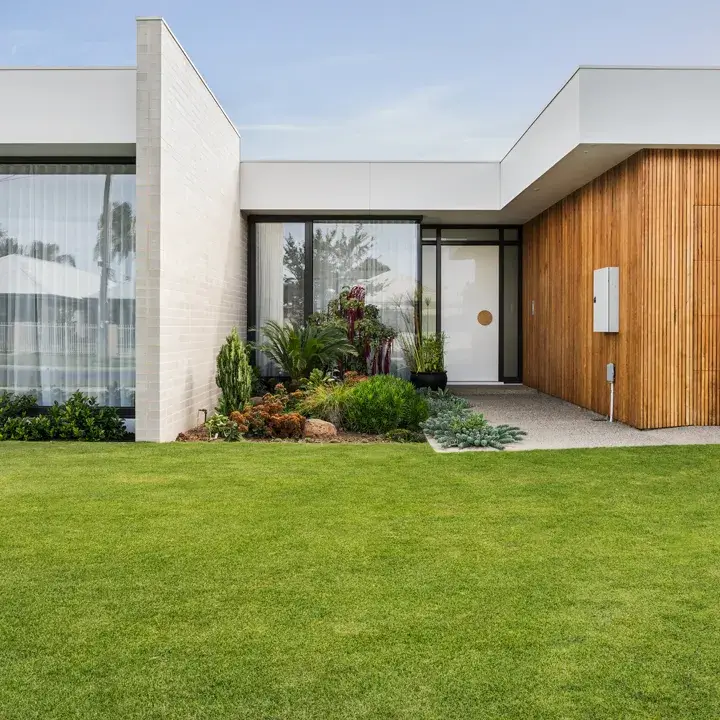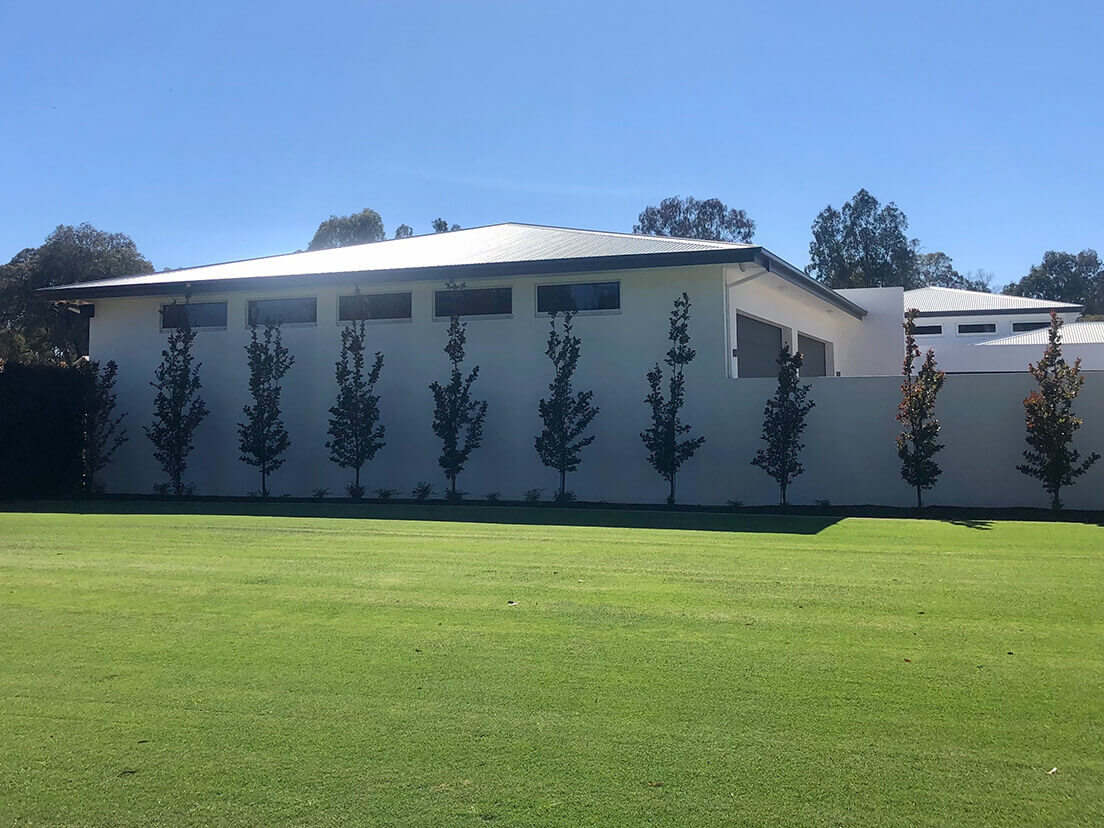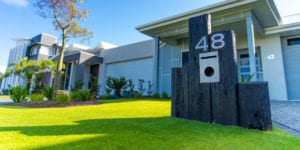Confused about the myths and facts around instant turf?
Let’s unpack some of the common misconceptions and explore why real grass is a smart choice for you, your community, and the environment.
Myth #1: Cost – It’s too expensive and won’t offer value for money
Natural turf is a low-cost option for land cover compared to alternatives such as concrete pavements and synthetic turf. The cost of laying instant turf is far more economical than many other alternatives. In addition, the green space created by an instant lawn has many benefits for your physical and mental health and will play a huge role in the overall street appeal of your home (more on that later).
The average price ofinstalled instant turf is around $30 per square metre. Of course, the price will depend on the variety selected, the quantity of your purchase, your soil preparation needs, and your choice of landscaper and irrigation system. However, most projects will cost between $27 and $34 per square metre.
When it comes to value for money, turf is hard to beat. Later in this blog we’ll unpack the physical and mental benefits, but let’s focus on your wallet first.
Did you know that turf around your home significantly reduces the cost of home cooling when compared with the urban heat generated from surfaces such as concrete and artificial grass?
Evidence unearthed in the Balmoral Research Project thanks to the Horticulture Innovation Turf Fund revealed that people living in the suburbs are becoming increasingly willing to pay to avoid the negative impacts of the Urban Heat Island effect. The Urban Heat Islands occur when cities replace natural land cover with dense concentrations of pavement, buildings, and other surfaces that absorb and retain heat, which in effect increase energy costs for air conditioning, air pollution levels, and heat-related illness and mortality. The good news is that instant turf has allowed many neighbourhoods to learn from these mistakes and create positive change by using green space.
Water Use – once established your drought-tolerant instant turf will use less water and save you money on water usage.
Myth #2: Instant turf won’t add value to my property
The Balmoral Project also acknowledged the value of private outdoor greenspace to house prices. For example, research has suggested that 82% of people consider the size of backyards to be a significant or very significant consideration when buying a house (Centre for Sport and Recreation Research, Curtin University, 2015), and a national survey of real estate agents suggests that lawns add a considerable margin to house prices (Turf Australia, 2012).
In addition, results from a national Raine & Horne survey of real estate agents revealed a lush, green lawn could improve property values by up to $100K.
Many agents agree that an instant lawn landscape is the quickest, easiest, and cheapest investment to prepare a home for sale, whether it’s a new home build, or an existing landscape on an established home.
A green, landscaped home will provide a significant price advantage and according to the Raine & Horne survey, a nicely presented lawn can boost your home’s value by 20-30%.
Charles L King and Co First National Echuca Director of Real Estate Troy O’Brien agrees an instant lawn landscape can add an instant wow to any property.
In his experience, he says a neat, tidy, and lush green lawn attracts more buyers to a house and improves property value.
“A great lawn provides the perfect first impression,” says Troy.
“It says ‘these people love their home’, and with hundreds of properties online to choose from you need to stand out…. you need to catch the buyer’s eye.”
As agents, Troy says they often recommend clients improve their lawn before selling.
He says it’s a cost-effective way for clients to make improvements that will deliver a fast and strong return.
“Buyers love to think all the hard work is done for them, and that’s one of the main attractions of a beautiful lawn.
“A green lawn also makes the home look and feel cooler, which is important in our hot environment, and it generally provides a great contrast against the colour of the home, which adds to the overall street appeal,” he says.
Myth #3: Fake Grass is cheaper and better
First and foremost, real grass equals instant cooling at your place, which will save you money on your cooling bill in summer. There is little doubt that cooling green grass is one of the most efficient cooling systems. Research shows that the temperature of a healthy lawn in the middle of summer is 10°C less than bare soil, 20°C less than asphalt, concrete or pebble mulch, and 40°C less than synthetic turf (aka fake grass).
In addition, the benefits of green space and spending time in the outdoors for our physical health are well documented.
Reconnection to nature and combatting Nature Deficit Disorder (yes, it’s a real thing) is just one of the many benefits of getting outside to enjoy your lawn.
Additional benefits of being outside in nature on your lawn include:
- Improve mood – it’s been proven that being outside in the fresh air in green space provides a chemical boost via the release of happy hormones likeendorphins, your brain's ‘feel-good’ neurotransmitters
- Stress reduction
- Increased creativity, concentration, and cognitive function
- Improved sleep (a very underappreciated and basic requirement of physical and mental health.
- Improve eyesight – studies of children have showed that ditching screen time for green time improves your depth of vision
- Increased physical activity and improved overall physical health through incidental activity like gardening, even raking leaves, wrestling with the kids or dog, or backyard games like cricket or kicking the footy.
A recent Lawn Solutions Australia (LSA) article also confirmed turf grasses play a critical role in the general health and welfare of our nation and pointed to studies that have shown green space can provide pockets of cool, clean and calm that are critical to optimal health, and offer an environment free from the stresses of the daily grind.
LSA contributed funding towards a world-first study that will measure the actual benefits that green space has for the community.
The $3.2 million, five-year project entitled Greener Cities, Healthier Lives has been funded by the Research Council Horticulture Australia’s Green Cities fund in partnership with the Population Wellbeing and Environment Research Lab, which is part of the Faculty of Social Sciences at the University of Wollongong (UOW) in NSW.
The research aims to provide measurable evidence of the health benefits of green space and the minimum amount of local green space – parks, gardens, trees and turf – needed for favourable health and societal outcomes.
The data collected will provide the first systemic evidence on the benefits of green space from birth to older age, and ultimately give industry and policy makers some solid numbers to work with when it comes to planning and infrastructure. Put simply, this research aims to confirm what we already know about the anecdotal evidence of spending time in nature.
Many countries around the world are already prioritising regular exposure to green spaces and recent research out of Japan – one of the most stressed and overworked nations in the world – is shining a light on the many benefits of spending time in forests and nature.
The Japanese term Shinrin-yoku (translated as Forest Bathing and first coined in the early 1980s) relates to a national pastime where walking in a cedar forest has been shown to lower levels of cortisol (stress hormone) and blood pressure and support the immune system much more than 40 minutes of indoor activity could do.
Specifically, the science has shown that trees and plants emit compounds known as phytoncides, that when inhaled provide therapeutic benefits similar to massage.
The act of Shinrin-yoku also aids in opening all your senses to a multitude of associated benefits. Amazingly these phytoncides can change our blood composition - increasing our protection against cancer by boosting our immune system and lowering blood pressure.
Forest bathing has now been adopted as an official health prevention tool in Japan and in other countries such as the UK studies have shown that using green space in urban areas, and incorporating diverse vegetation and wildlife, improves the health and wellbeing of all who dwell there.
So, it’s clear that fake grass just won’t offer what real turf can.
Myth #4: Instant turf won’t deliver any health benefits
Beside the well-known benefits of green space to physical health mentioned above, let’s not overlook the emotional benefits of spending time outdoors on your lawn.
With a focus on mental health, a UK study revealed that simply providing a small amount of green space created greater opportunity for enhancing psychological wellbeing. Countless other studies identified that just walking in nature causes us to stop worrying, solve problems more easily, be more inspired and become more social. It’s important to note here that these benefits can be gained from the smallest plot of grass and that you don’t need to escape to a world heritage listed rainforest to reap the benefits – although a holiday in the Daintree would be lovely right now!
In addition to the physical and mental benefits of green space, there are many positives for our communities including reduced noise and heat, improved air quality and greener and cleaner towns and cities.
Just the colour green is well known for its calming properties to reduce stress levels, which leads to lower levels of blood pressure across the community and a decrease in rates of depression.
The Balmoral Project also highlighted an array of benefits that turf brings to people including the creation of community spaces that allow people to socialise outdoors, the opportunities to engage in sport and physical recreation, and the mental health benefits that arise from these, as well as the health benefits associated with moderated urban heat island effects (more on this later).
Green space for mental health
The Project, which examined the total economic, social, health and environmental benefits of turf grass through the supply chain and its end use also revealed a positive link between greenspace and better mental health outcomes.
A 2017 study estimated that the annual cost of mental illness in Australia was $12,800,000,000 each year, including depression, anxiety, and substance use.
Interestingly, a 2013 study into the association between access to urban green space in New Zealand found that every 1% increase in the proportion of green space within 3km was associated with a 4% lower anxiety/mood disorder treatment.
Myth #5: A greener neighbourhood won’t benefit my local area
So, it’s obvious turf grass will offer many physical and emotional benefits to you and your community and makes a strong economic argument for your coverage of choice. But what about the benefits to our wider neighbourhood and communities?
We’ve mentioned the visual impacts of green space, but the benefits flowing from parks and sports field turf parks and sports fields include ongoing and beneficial opportunity for recreation, socialisation, and people simply knowing that they exist. The importance of these green spaces was highlighted over the past 18 months when during extended lockdowns due to COVID-19 outbreaks, one hour of exercise at the local oval or park became a physical and emotional lifeline.
Outside of COVID times, research showed that benefits of these green spaces existed from people simply watching events at the facility or from people who value the opportunity to give others the benefit of the park, such as the relationship of sports fans or parents and children.
Regardless of the uses of a park or sports field, the benefits these facilities bring are highlighted in the project by the public’s Willingness to Pay value. This value relates to what residents are prepared to spend or contribute towards turfed green spaces, public parks and sports fields in their local community due to the many and varied mental, physical and social benefits.
In a 1998 study about the creation of community spaces it was found that ‘greenness’ in and around apartments correlated with assessments residents made of their neighbourhood’s social ties and connectedness.
The study explored relationships between neighbourhood greenness, social interaction, physical activity, and mental health, and confirmed that urban green space, including turfed areas enhanced opportunity for physical activity and boosted both mental health and well-being.
Put simply, by providing places in a community for physical exercise and recreation, turfed green spaces in the urban areas encourage people to lead healthier lives.
The study also revealed that investment in green space infrastructure in a community helped to combat the average social cost of physical inactivity in Australia that was estimated at $757 per person in 2015.
Finally, with the impact of mental illness across our community becoming more apparent each year, particularly during the pandemic, surely the strong link between increased greenspace and better mental health outcomes can no longer be ignored.
A final word on the environment
Let’s also not forget the global community in this conversation and the alarming consequences of our current climate emergency.
When it comes to greenhouse gas sequestration, turf grass reduces the negative impacts of climate change by absorbing carbon dioxide through the process of photosynthesis. This has a monetary value in proportion to the amount of carbon sequestered by turf.

